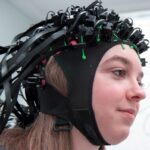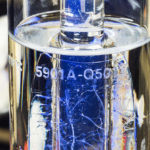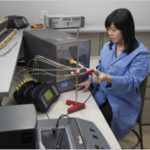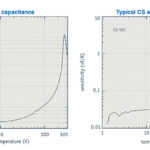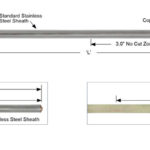Temperature is a widely measured real-world physical variable, but achieving credible results is harder than it seems, even for a simple device such as a kitchen oven.
While many temperature-related measurements require high accuracy, precision, and repeatability — let’s say, to better than 1º C — many others do not, yet still bring challenges. Consider the standard gas-fired or electric oven in a consumer range and the entire baking process. You would think that the temperature setting of such an oven would both be accurate to about ±10ºF (about ±5º C), but that’s wrong, and the reality is much worse. Further, the stability around that setpoint is mediocre due to the on/off heating control and associated hysteresis around the setpoint despite the oven’s thermal mass.
Start with a simple example. The baking performance of my home oven, a standard GE unit about 15 years old but in good shape, was inconsistent. Logically, this probably meant that the thermocouple, which senses the oven temperature and controls the gas flow on/off, was malfunctioning. I was about to replace it myself ($35 for the part and about an hour of work), but I decided not to go that route after considering the situation more thoroughly. The repair technician came, measured the DC resistance of the thermocouple with the oven off, and said it was within specification. Instead, the electrical heater that ignites the gas in the on/off control scheme was failing. Problem solved…in theory (and I am glad I did not waste time and money to replace the thermocouple, as that would not have solved the problem).
But the scenario made me more curious about the accuracy and consistency of the oven’s temperature readings. Ideally, I would have an electronic temperature meter with a remote high-temperature probe to measure the temperature with the door closed. But I didn’t have one and was unwilling to spend the money for it, solely to satisfy my oven curiosity. Instead, I bought a basic $10 all-metal passive oven thermometer, Taylor Model 5932, capable of measuring over a range of 100⁰ to 600⁰F (38º to 150º C) (Figure 1).
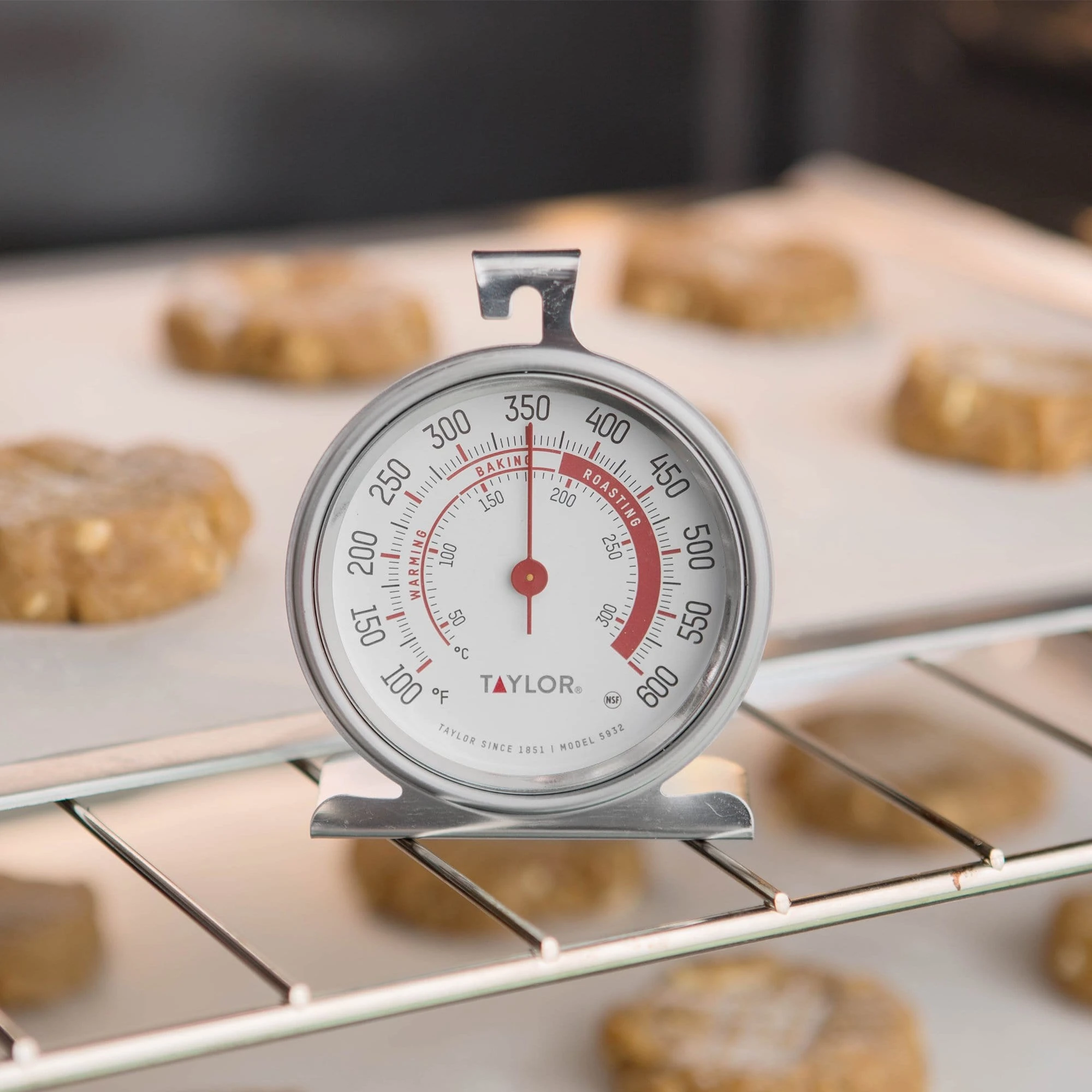
But I had no idea of the accuracy of this thermometer, and there was no mention of it on the packaging(!). I emailed the company, and they promptly responded with data (Figure 2).
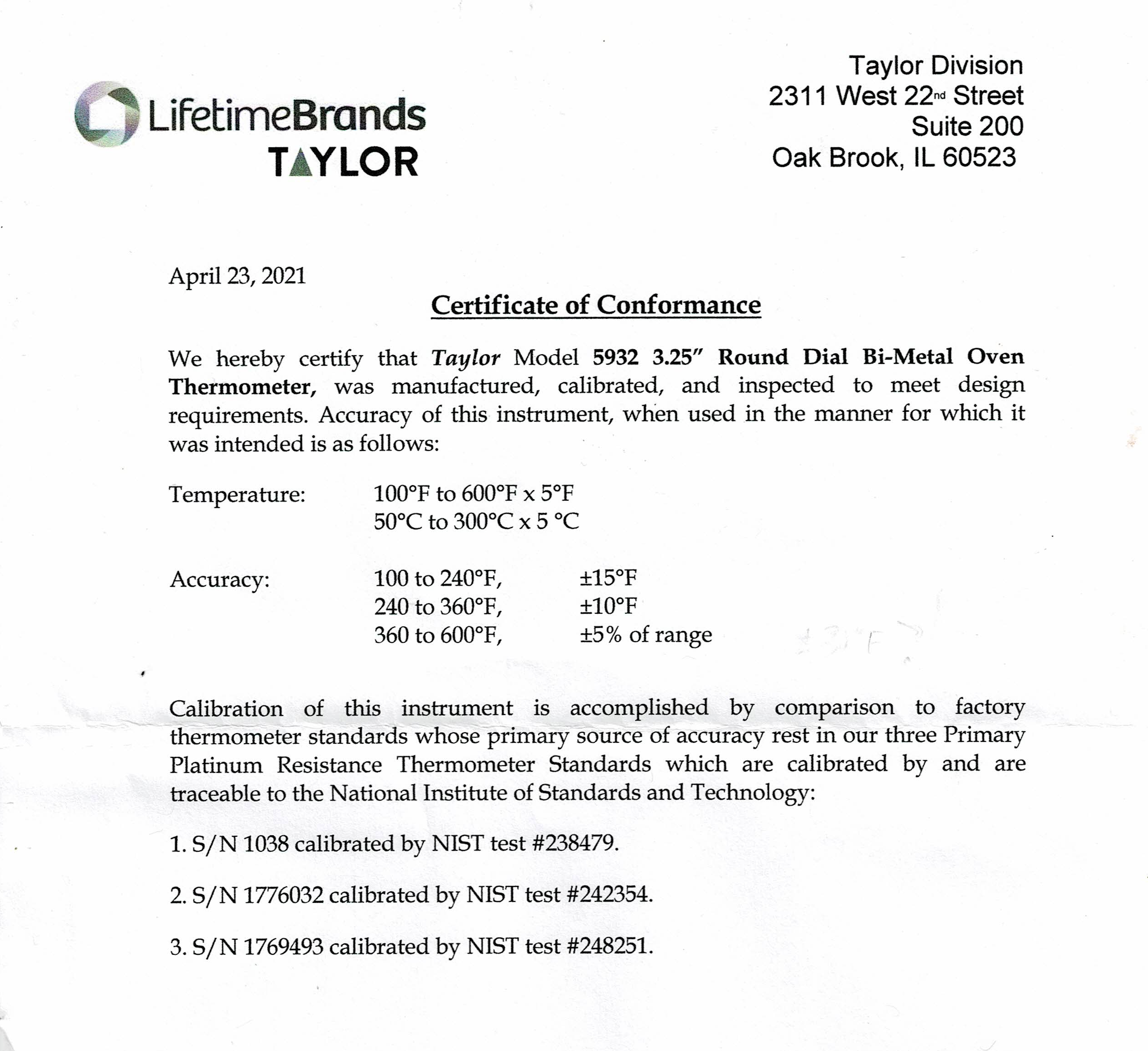
So the accuracy of this unit is what I would politely deem as “moderate.” I figured I could live with that because what I was really looking for was the consistency of oven performance as much as absolute accuracy. If I knew, for example, that the oven was off by a certain amount, I could certainly adjust the setting I entered. Further, If I was ambitious, I could even change the entered setting values to the corrected value and not have to worry about doing a mental and manual correction each time. The oven does have a provision for changing the temperature setting entries to accommodate such inaccuracies.
But that’s only part of the oven-measurement challenge. Where should I place the thermometer in the oven? Some quick web searches for the answer to this question revealed the secret: all over. In other words, this becomes the third problem with oven temperature: first, the nominal setting of the oven is not very accurate; second, the oven cycling on/off cause large swings in the temperature of ±25º F to ±50º F around the setpoint; and third, the oven itself is very uneven with local hot and cool spots.
No problem, as I figured that I would simply create a 3D map of the oven’s hotter and cooler zones and use it as a guide when baking. While doing my earlier web searches on where to measure the internal temperate, I came across an article from IEEE Spectrum I recalled reading, “Nathan Myhrvold’s Recipe for a Better Oven.” Unlike some online information, I saw that seemed based on secondhand, unverified information, I knew Myhrvold was a pretty sharp fellow, as a former CTO at Microsoft and with other credentials.
In his article, Myhrvold discusses the various mechanisms by which the standard oven heats up — it’s a combination of thermal radiation, conduction, and convection. It also varies depending on if it’s a gas or electric oven. Complicating the analysis, these three thermal mechanisms “kick in” with different proportions depending on the oven’s temperature. As a result, the internal 3D thermal map of the oven is dynamic rather than static, so any attempt to determine the spot which has the desired nominal temperature would involve different corrective maps. (Incidentally, a detailed report from Ampleon, a vendor of microwave-oven solid-state RF power amplifiers, shows that the standard magnetron-driven microwave oven also has a very uneven 3D thermal map, “RF Solid State Cooking White Paper.”
This was all getting to be a lot of work; it was time to return to real work.
Conclusion and closure
At some point, we have to end our investigations and get on with life and learn to live with undercooked or overdone cookies, cakes, and other oven efforts, by developing an intuitive, experience-based sense of what works and what doesn’t. I decided it was time to move on but reviewed the takeaway lessons. None of these are news or revelations, but they are worth remembering even in “mundane” situations such as the standard home oven.
- calibrating a sensor itself with confidence — as distinct from the sensor electronics — can be hard, especially as accuracy requirements increase.
- calibrating an installed sensor that cannot be removed is harder, and doing so while the sensor is in use is extremely difficult.
- even if you have a calibrated sensor, making use of it in the application requires careful understanding as to where it is placed, the effect of location, and how the dynamics of the installation being sensed can distort and affect the quality of the readings and subsequent conclusions.
Long story short: making temperature measurements that give you confidence in the results and assurance that you aren’t fooling yourself is not easy, even if the concept of temperature measurement seems direct. Sometimes you have to go with your best estimate but also acknowledge it as such.
EE World Online Related Content
What are cryogenic temperature measurements? Part 1
What are cryogenic temperature measurements? Part 2
Solid-state temperature sensing Part 1 — principles
Solid-state temperature sensing, Part 2 – application
The proving ring – An alternative to dead-weight calibration, Part 1
The proving ring – An alternative to dead-weight calibration, Part 2
References
Fluke, “How to Calibrate a Thermocouple”
Fluke, “9118A Thermocouple Calibration Furnace”
Omega Engineering, “Common Techniques to Calibrate Thermocouples”
Electronic Design, “IR Thermometer Reads to 0.001°C with Accuracy, Stability”
NIST, “Kelvin: Introduction”
NIST, “SI Units – Temperature”
NIST, “The Calibration of Thermocouples and Thermocouple Materials”
IEEE Spectrum, “Nathan Myhrvold’s Recipe for a Better Oven”
Ampleon, “RF Solid State Cooking White Paper”

